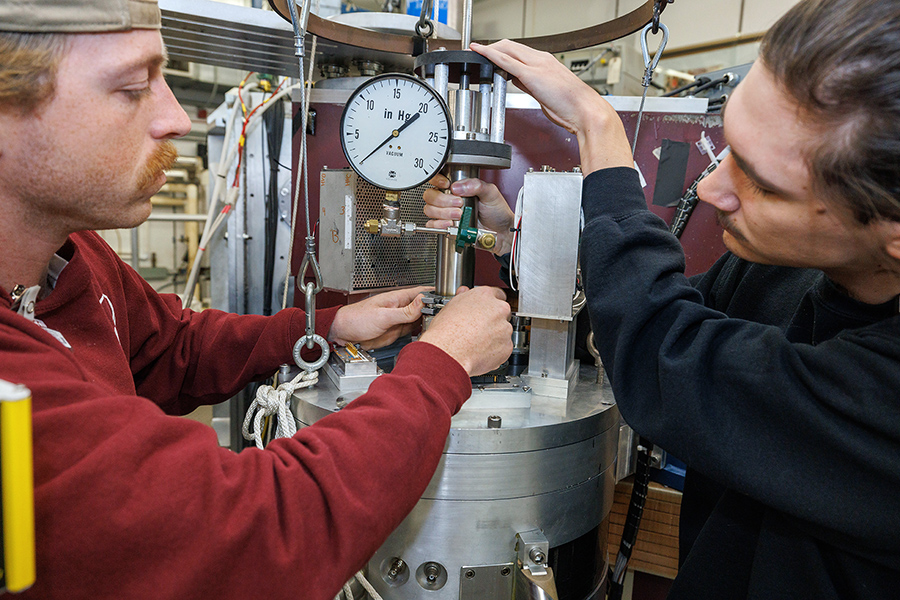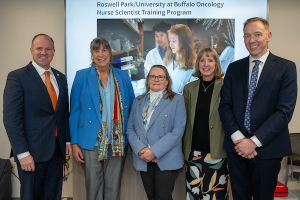Currently, sarcoidosis is diagnosed through confirmation of non-caseating granulomas in tissue biopsies of organs where there is no other applicable diagnosis. Sarcoidosis is similar to tuberculosis, which is an infectious granulomatous disease. Active tuberculosis infection can be deadly. Exposure to bacterial tuberculosis may stay dormant for long time and is called latent tuberculosis. One third of humans worldwide are infected with latent tuberculosis but have no symptoms. Under specific circumstances, such as immune suppression, these individuals may develop full-blown tuberculosis. There are no simple tests to discover latent tuberculosis infection from tuberculosis disease or from sarcoidosis.
A team of researchers led by Lobelia Samavati, M.D., associate professor in the Center for Molecular Medicine and Genetics and Department of Internal Medicine at Wayne State University’s School of Medicine, has been working for more than 10 years to discover specific serological biomarkers of sarcoidosis and tuberculosis.
With the help of a recent $1.98-million grant from the National Heart, Lung, and Blood Institute of the National Institutes of Health, Samavati’s research team aims to advance their work of developing biomarker technology for identification of biomarkers of sarcoidosis.
Samavati developed a comprehensive library derived from sarcoidosis tissue that can differentiate between sarcoidosis and several other respiratory disorders. Using a high throughput method, her team developed a complex epitope library derived from materials of sarcoidosis patients. This cDNA library contains large numbers of epitopes immunoscreened with sera from patients with sarcoidosis containing high titer IgG antibodies and the cloned phages, which have been used to construct an antigen microarray to detect antibodies against sarcoid antigen(s) in the sera of test subjects.
“We have identified a panel of biomarkers/classifiers with high sensitivity and specificity that can discriminate between sera of patients with sarcoidosis and healthy controls, as well as active tuberculosis subjects,” said Samavati. “Our results have been published in several peer-reviewed journals, and we have two different licenses for our invention.”
Samavati’s grant, “A Novel T7 Phage Display Technology to Detect Sarcoidosis Specific Antigens,” aims to advance and refine her technology to discriminate sarcoidosis from latent tuberculosis and healthy controls. Her team has identified novel antibodies that may be used as a molecular therapy target, and their goal over the next four years is to further map these peptides and identify their biological function. Their current data indicates that some of these peptides can be used as diagnostic tools, while others can be used as therapy targets.
The overall goal is to define the specific antigens initiating granuloma formation in sarcoidosis and how immunity in response to antigen leads to sarcoidosis and latent tuberculosis. In the future, this approach could be used to identify a panel of biomarkers useful for diagnosis of various organ involvements in sarcoidosis and differential diagnosis of other granulomatous diseases or response to treatment in sarcoidosis subjects. Furthermore, the identified antigens can be used to develop a model for sarcoidosis.
Using a high-throughput method, Samavati and her research team developed a novel platform based on T7 phage library — a cDNA library derived from mRNA isolated from bronchoalveolar lavage (BAL) and leucocytes of sarcoidosis patients. They constructed a microarray platform and immunoscreened with sarcoidosis subjects, tuberculosis, healthy controls and other respiratory diseases.
The phage display technology and immunoscreening have utilities not only in identification of diagnostic biomarkers, but also may enable Samavati and others to develop a novel targeted therapy utilizing the peptide sequences (mimotopes) as a vehicle to deliver specific drugs.
“We believe that our technology will be able to harness the diversity of antibodies and can aid to identify protective antibodies in various diseases in humans, including viral respiratory infections such as the corona virus,” said Samavati. “We believe that this study is the beginning of new era to identify protective immunity in form of antibodies.
Sorin Draghici, the Robert J. Sokol, M.D. Endowed Chair in Systems Biology in Reproduction and professor of computer science in Wayne State’s College of Engineering, is collaborating with Samavati. He contributed to the design of the study and will supervise the data analysis.
The grant number for this National Institutes of Health project is HL150474.
# # #
Wayne State University is one of the nation’s pre-eminent public research institutions in an urban setting. Through its multidisciplinary approach to research and education, and its ongoing collaboration with government, industry and other institutions, the university seeks to enhance economic growth and improve the quality of life in the city of Detroit, the state of Michigan and throughout the world. For more information about research at Wayne State University, visit http://www.research.wayne.edu.
Original post https://alertarticles.info



